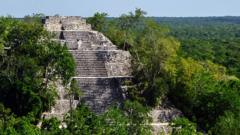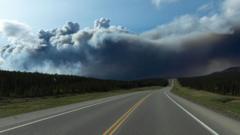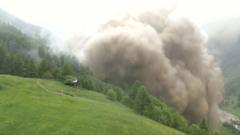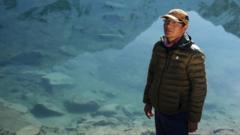PhD student Luke Auld-Thomas stumbled upon a lost Maya city named Valeriana while analyzing Lidar data, revealing an expansive ancient complex that reflects the advanced civilization's societal structure. This discovery opens new avenues for understanding their historical context amid climate change challenges.
Revolutionary Lidar Technology Uncovers Ancient Maya City in Mexico

Revolutionary Lidar Technology Uncovers Ancient Maya City in Mexico
Accidental discovery of Valeriana challenges previous understandings of Maya civilization in the tropics.
A significant archaeological discovery has emerged from the Mexican jungle, as a PhD student accidentally uncovered a long-lost Maya city known as Valeriana. This incredible find features pyramids, sports fields, and a network of causeways and amphitheaters hidden beneath dense vegetation in the southeastern state of Campeche.
Utilizing Lidar technology — a laser survey method that maps obscured structures — researchers identified Valeriana as potentially one of the densest Maya cities, second only to Calakmul, the largest site in ancient Latin America. The discovery was made by Tulane University PhD student Luke Auld-Thomas, who stumbled across a laser survey while scrolling through data online.
“I was deep in a Google search when I found a laser survey by a Mexican organization for environmental monitoring,” Auld-Thomas explains. Processing the data with archaeological methods revealed evidence of a monumental city that once housed approximately 30,000 to 50,000 people between 750 and 850 AD—more than the current population residing in that area.
Valeriana's name is derived from a nearby lagoon and serves to challenge the prevailing notion in Western scholarship that tropical regions represent the decline of civilizations. Professor Marcello Canuto, co-author of the research, emphasizes that this discovery underscores the rich, complex cultures that thrived in this part of the world, negating the long-held belief that the tropics were inhospitable to sophisticated societies.
While the exact reasons for the city’s eventual demise remain unclear, the archaeologists suggest climate change played a significant role. Valeriana is impressively located just a 15-minute hike from a major road near Xpujil and spans approximately 16.6 square kilometers, featuring two main centers separated by 2 kilometers of linked infrastructures.
Evidence collected indicates that this ancient city boasted plazas adorned with temple pyramids that served as sites for worship and included treasure-filled burials and recreational spaces for ancient ball games. The presence of a reservoir showcases the landscape's vital role in supporting a large population.
In total, Auld-Thomas and Professor Canuto surveyed three key sites, identifying 6,764 buildings of varying sizes. Expert Professor Elizabeth Graham from University College London, who was not involved in this research, asserts that this discovery supports the theory that Maya civilization was characterized by complex urban centers rather than isolated villages.
As Auld-Thomas notes, the unexpected density of Maya habitation suggests that overpopulation contributed to the civilization's struggles during drought conditions. Warfare and Spanish invasions in the 16th century also played critical roles in the decline of Maya city-states.
Thanks to advancing Lidar technology, which allows archaeologists to uncover previously hidden sites over vast areas, the landscape is now yielding hidden treasures. Professor Canuto explains that the area mapped within a decade using Lidar surpasses what was accomplished in a century by traditional means, and many more ancient cities likely await discovery.
Though intrigued by Valeriana, Auld-Thomas indicates that the sheer number of newfound sites may overwhelm researchers’ capacity for excavation. "There are more cities than we can ever hope to study," he cautions, highlighting both the potential and the challenges that come with these groundbreaking discoveries. This exciting research is published in the academic journal Antiquity.




















